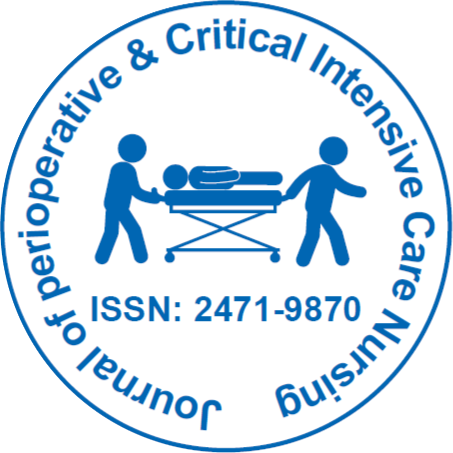
Journal of Perioperative & Critical Intensive Care Nursing
Open Access
ISSN: 2471-9870

ISSN: 2471-9870
Opinion - (2023)Volume 9, Issue 2
Tracheostomy care is a critical aspect of healthcare that involves the management and maintenance of a tracheostomy tube, a surgically created airway, to ensure proper breathing for patients with a compromised upper airway. This comprehensive procedure necessitates a deep understanding of anatomy, infection control, and the use of specialized equipment. Tracheostomy care involves a multidisciplinary approach, with healthcare professionals collaborating to provide meticulous care and support for patients with a tracheostomy.
Tube management and maintenance
Tracheostomy tube management is a crucial aspect of tracheostomy care. Proper tube selection, insertion, and regular assessment are fundamental to ensure optimal patient outcomes. Tracheostomy tubes come in various sizes and types, each catering to different patient needs. Regular assessment of the tube's position, cuff pressure, and skin integrity surrounding the stoma are essential to prevent complications such as accidental decannulation, tracheal stenosis, or pressure ulcers. Routine suctioning is necessary to maintain a patent airway and prevent mucus accumulation. Healthcare professionals should be proficient in performing sterile suctioning techniques while ensuring patient comfort. Careful monitoring of oxygen saturation and respiratory status during and after suctioning is imperative to detect any adverse effects promptly.
Wound care and infection control
Proper wound care around the tracheostomy site is essential to minimize the risk of infection and promote healing. Regular cleaning and dressing changes should be performed using sterile techniques. The skin surrounding the stoma should be inspected for redness, inflammation, or signs of infection. Maintaining a dry and clean environment around the tracheostomy site is crucial to prevent skin breakdown or infection.
Infection control plays a vital role in tracheostomy care. Strict hand hygiene, including proper handwashing and the use of personal protective equipment, is imperative to prevent the transmission of microorganisms. Regular changing and cleaning of the tracheostomy tube, along with routine oral care, are essential to reduce the risk of respiratory infections.
Patient education and support
Patient and caregiver education is paramount in tracheostomy care. Providing comprehensive information about tracheostomy care techniques, emergency management, and potential complications empowers patients and their caregivers to take an active role in self-care. Education should cover topics such as suctioning, tube care, signs of infection, and proper hygiene practices.
Furthermore, psychosocial support is vital for patients with tracheostomies. The alteration in body image and communication difficulties can significantly impact a patient's emotional well-being. Healthcare professionals should offer empathetic support, encourage open communication, and provide resources for patients to seek additional emotional support.
Complications and emergency management
While tracheostomy care is generally safe, complications can arise, necessitating prompt recognition and intervention. Potential complications include bleeding, tube dislodgement, infection, tracheal stenosis, and granulation tissue formation. Regular monitoring for signs of complications, such as increased respiratory distress, difficulty speaking, or excessive secretions, is crucial. Healthcare professionals should educate patients and caregivers on when and how to seek emergency assistance.
Tracheostomy care plays a pivotal role in ensuring the well-being and safety of patients with compromised upper airways. Proper tube management, including regular assessment and suctioning, is vital for maintaining a patent airway. Wound care and infection control minimize the risk of complications and infections. Patient education and support are essential in empowering patients and caregivers to actively participate in tracheostomy care. By providing comprehensive information and emotional support, healthcare professionals can enhance patient outcomes and overall quality of life.
Citation: Held F (2023) Tracheostomy Care: Ensuring Optimal Patient Well-being and Safety. J Perioper Crit Intensive Care Nurs. 9:227
Received: 23-May-2023, Manuscript No. JPCIC-23-24931; Editor assigned: 26-May-2023, Pre QC No. JPCIC-23-24931 (PQ); Reviewed: 12-Jun-2023, QC No. JPCIC-23-24931; Revised: 19-Jun-2023, Manuscript No. JPCIC-23-24931 (R) ; Published: 26-Jun-2023 , DOI: 10.35248/2471-9870.23.9.227
Copyright: © 2023 Held F. This is an open-access article distributed under the terms of the Creative Commons Attribution License, which permits unrestricted use, distribution, and reproduction in any medium, provided the original author and source are credited.